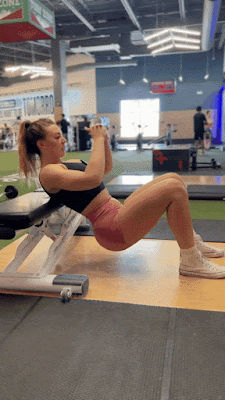Yes, bridges are an effective exercise for targeting and strengthening the glutes. The bridge exercise primarily engages the gluteus maximus, which is the largest muscle in the buttocks. Additionally, it involves the hamstrings, core muscles, and lower back to a lesser extent. Performing bridges regularly can contribute to improved glute strength, stability, and overall lower body function.
Here's how to do a basic bridge exercise:
Muscles Targeted:
- Gluteus maximus
- Hamstrings
- Core muscles
Equipment Needed:
- Exercise mat (optional)
Execution:
Starting Position:
- Lie on your back with your knees bent and feet flat on the floor. Keep your arms at your sides, with your palms facing down.
Hip Lift:
- Press through your heels and squeeze your glutes to lift your hips toward the ceiling. Your body should form a straight line from your shoulders to your knees when you reach the top.
Top Position:
- At the top of the movement, your body should be in a bridge position with your shoulders, hips, and knees aligned.
Hold and Squeeze:
- Hold the bridge position for a moment, focusing on squeezing your glutes at the top.
Lowering Phase:
- Lower your hips back down to the starting position in a controlled manner.
Repeat:
- Repeat for the recommended number of repetitions.
Tips:
- Keep your feet hip-width apart.
- Avoid arching your lower back excessively. Engage your core to maintain a neutral spine.
- Focus on using your glutes to lift your hips, rather than relying solely on your lower back.
Variations:
Single-Leg Bridge:
- Lift one leg off the ground while performing the bridge, engaging one glute at a time.
Elevated Bridge:
- Place your feet on an elevated surface (e.g., a bench or step) to increase the range of motion and intensify the exercise.
Banded Bridge:
- Place a resistance band just above your knees to add extra resistance and target the outer glutes.
Including bridges in your workout routine can contribute to better glute activation, which is essential for various functional movements and overall lower body strength.



.gif)


.jpg)





